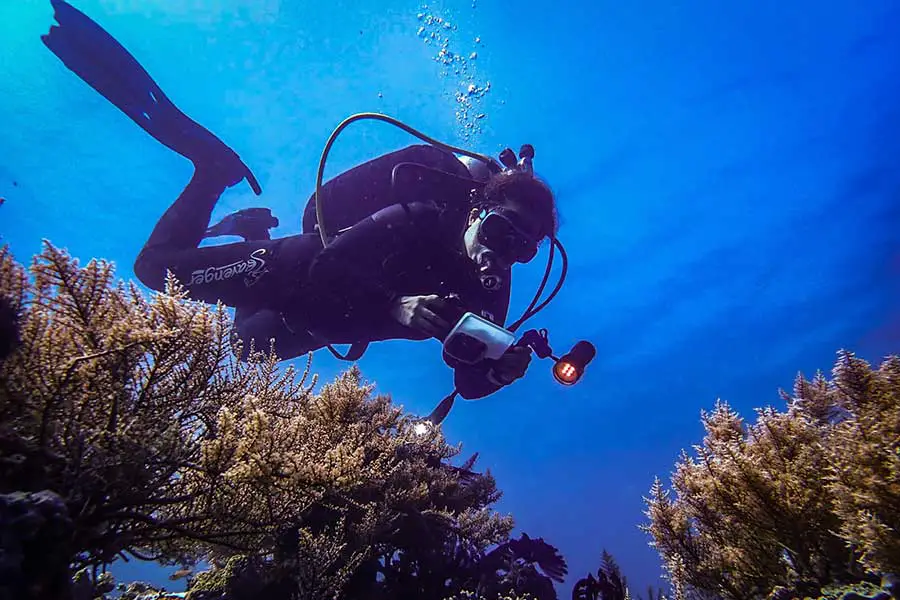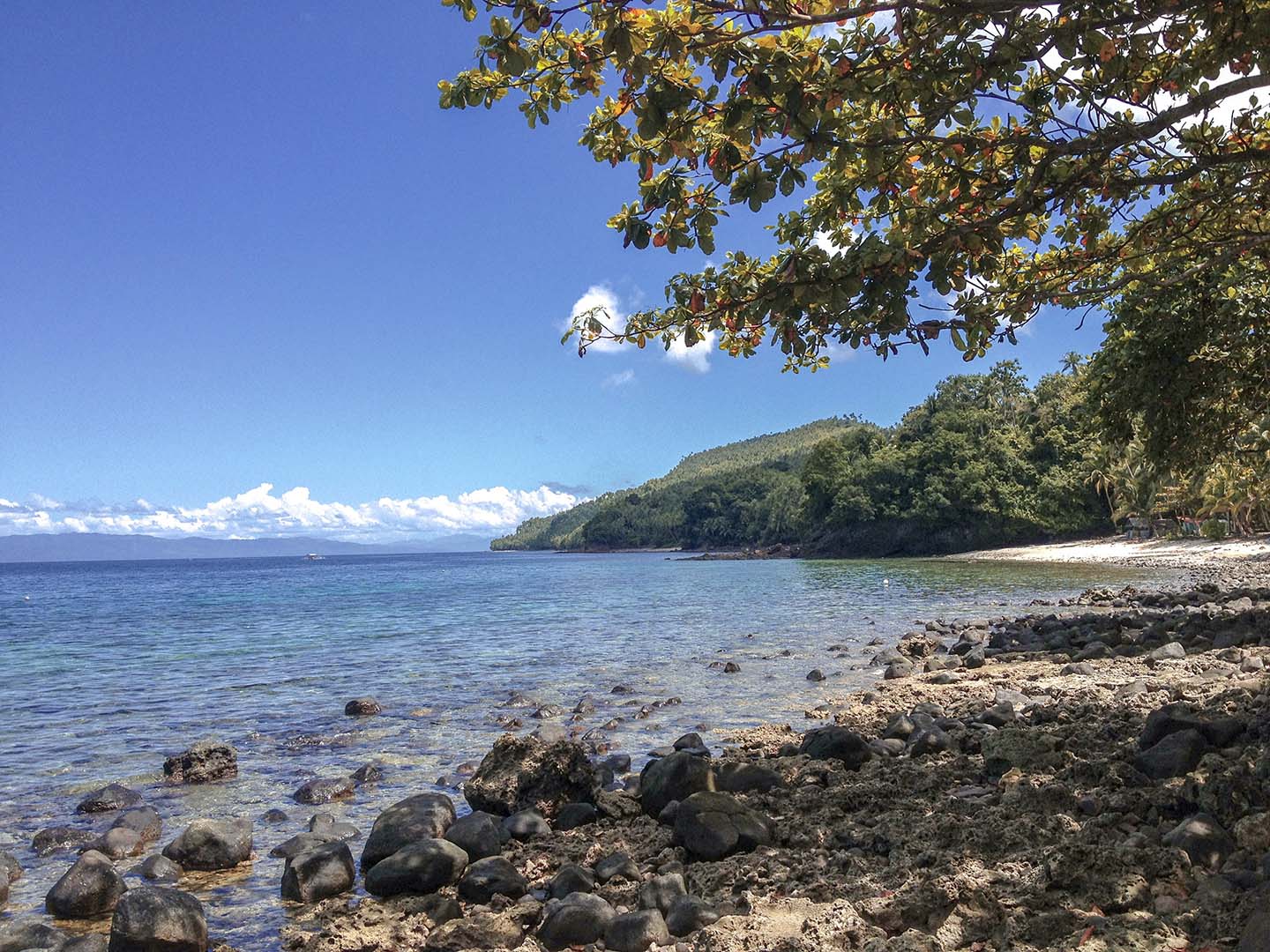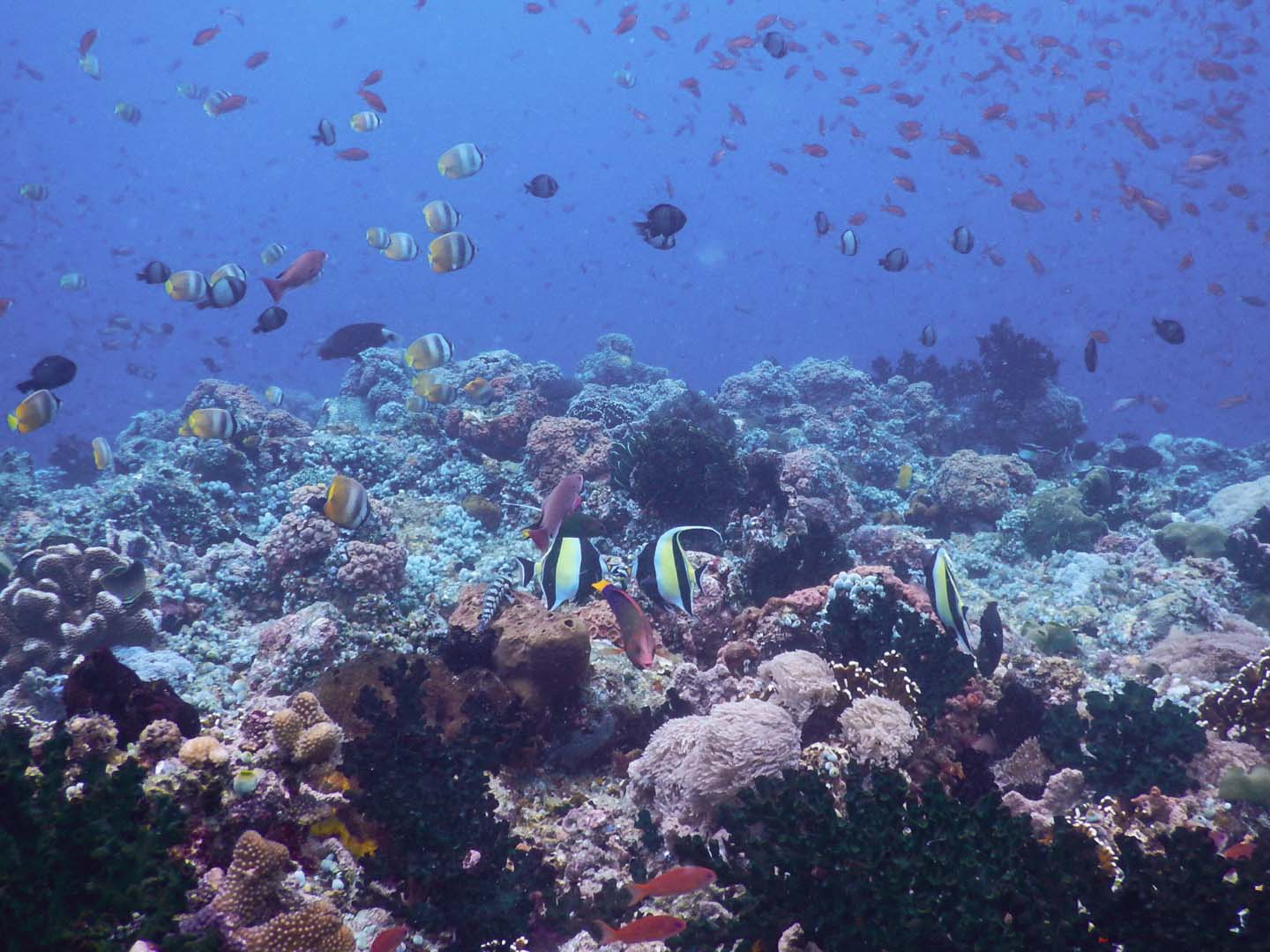In this post, I share with you some underwater photography mistakes you can easily avoid if you are a new underwater photographer. These tips may result in a better diving experience for you as you capture the underwater world.
This will not be the usual list that will tell you to work on your buoyancy or how you should compose a photo. But rather this is a list of mistakes I have made and sometimes still do that has led to me taking really bad photos.
I hope you will learn from the underwater photography mistakes instead of making them on your own.
You can easily avoid these beginner photographer mistakes. And when you do, hopefully, you will have better photos.
1. Rushing towards your subject
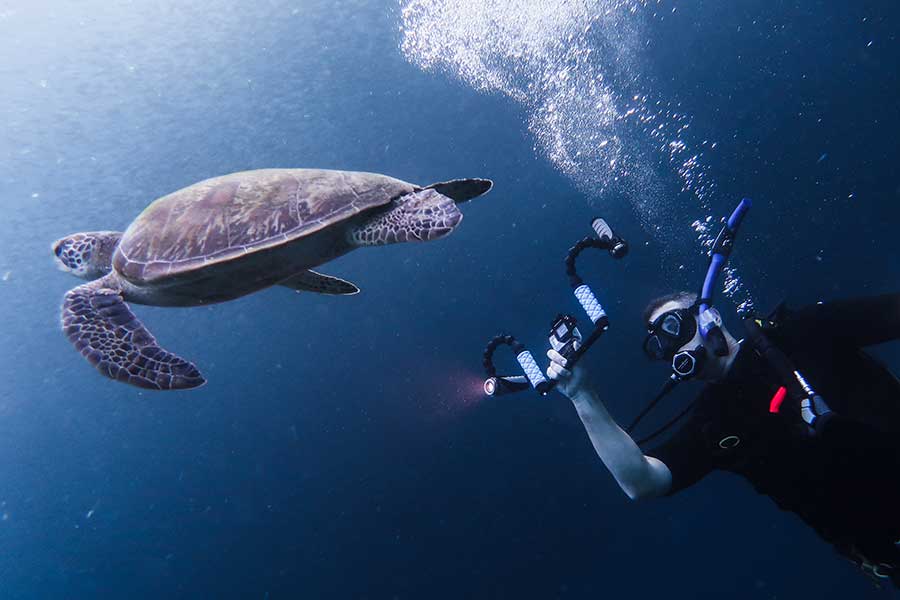
As a scuba diver and underwater photographer, you will be excited about everything you see underwater. When you have a camera with you, you just want to take photos of everything. You do not want to miss out.
When you see a one of a kind marine animal from a distance your instinct might be to get close as soon as you can. However, don’t make the underwater photography mistake of rushing towards the sea creature.
Your abrupt movements will spook the animal and might cause it to flee. This will ruin your shot and the experience for everyone else.
Instead, approach the marine animal with caution. Observe the behavior of the animal as well as the other divers with you. If you are diving in a group, there is a tendency for divers to cluster around the animal.
Stay back and wait. Do not add to the stress of the animal.
More often than not, the animal will try to flee the group. And if you’re lucky, the animal will head to your direction instead. This will give you a window of opportunity to take the perfect shot.

2. Rushing your shot
This underwater photography mistake is similar to the first, and that is the tendency to rush.
You have traveled thousands of miles just to see a Melibe colemani also known as the ghost nudi- the holy grail of nudibranchs.
Then when you download the pictures at home, you find out that out of the 20 photos you took, nothing was good. They’re out of focus, over-exposed, or taken from a bad angle.
Basically, it’s crap.
The slow-moving sea slug was an easy subject to take. But somehow you still managed to mess it up.
Why?
Because you did not pause to think.
You can easily improve the quality of your photography by reviewing your shots while underwater. Go through what you’ve taken so far. Then make the adjustments right there and then, instead of regretting it after.
You just need a few seconds to check if you are happy with your shots. If you do, it will be worth it.

3. Failing to research about your dive location and subject
If you’re diving in a new place, do not make the underwater photography mistake of not doing enough research. If you’ve been taught to plan the dive and dive the plan, the same can be applied to underwater photography.
When you fail to plan for your underwater photography dives, you might end up disappointed with the results. You have to factor in the photography aspect of the dive so you can get better photos.
Are you going to a place where you’re doing more macro or wide-angle photography? Is there a rare critter that can only be found in that spot? If you do your research and come prepared, there’s a bigger chance that your photos will come out better.
Ask the dive shop on what to expect and what you’d need to bring. If they know you intend to take photos, they might have additional reminders or tips for you.
There are many underwater photographers who have shared tips on how to photograph a specific animal. Read those articles ahead of time. This will prepare you so you know how to approach your subject or how to deal with the underwater environment.
4. Diving with the wrong people
Diving with the wrong people could make or break your dive and your underwater photography.
If you’re diving with non-photographers, they might not understand that you will need time while doing underwater photography. This could lead to a stressful experience for both of you.
Or you might be part of the group who seem to be in a race underwater while you prefer a slower-paced dive that allows you to check nooks and crannies for critters.
Diving with the right people will greatly improve your underwater photography.
It helps to dive with a buddy who also likes underwater photography. But if you can’t find one, at least find a dive buddy who doesn’t mind diving with a photographer.
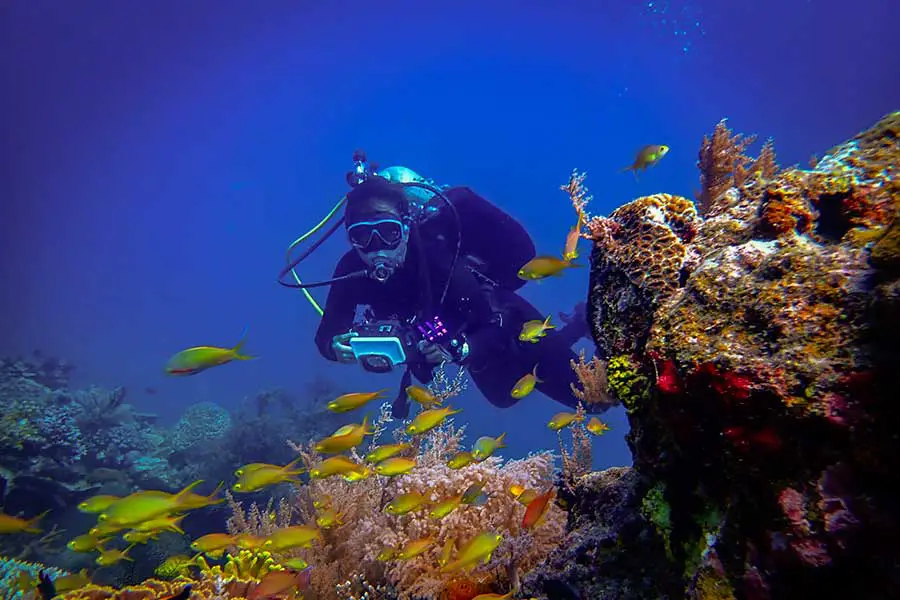
Join dive groups who are into the same type of photography as you are. Go to dive shops that specialize in underwater photography. Or request for guides who are excellent spotters.
Diving with like-minded divers or at least divers who understand an underwater photographer’s habits will make your dives run more smoothly. They can even help you out underwater and afterward, they can share tips that can make you a better underwater photographer.
5. Using new gear on a very important dive
So you’ve decided buy a new underwater camera. You’re going on a big trip and brought a new point and shoot complete with trays and even strobes. You can’t wait to capture the memories of your first liveaboard trip in the Great Barrier Reef!
Having new equipment is very exciting, but don’t make the underwater photography mistake of taking your new gear on a test drive during a very important dive. I did this when I first got my Canon G7X Mark II and Fantasea Housing and my first dive in the Great Barrier Reef was a bit of a disaster.
If you’re working with a new set up, do a checkout dive where you can get accustomed to your new gear. This works for both scuba diving gear and your photography gear.
The last thing you want is to be missing the epic moments in your dream vacation because you were busy trying to figure out how to make your new camera work underwater.
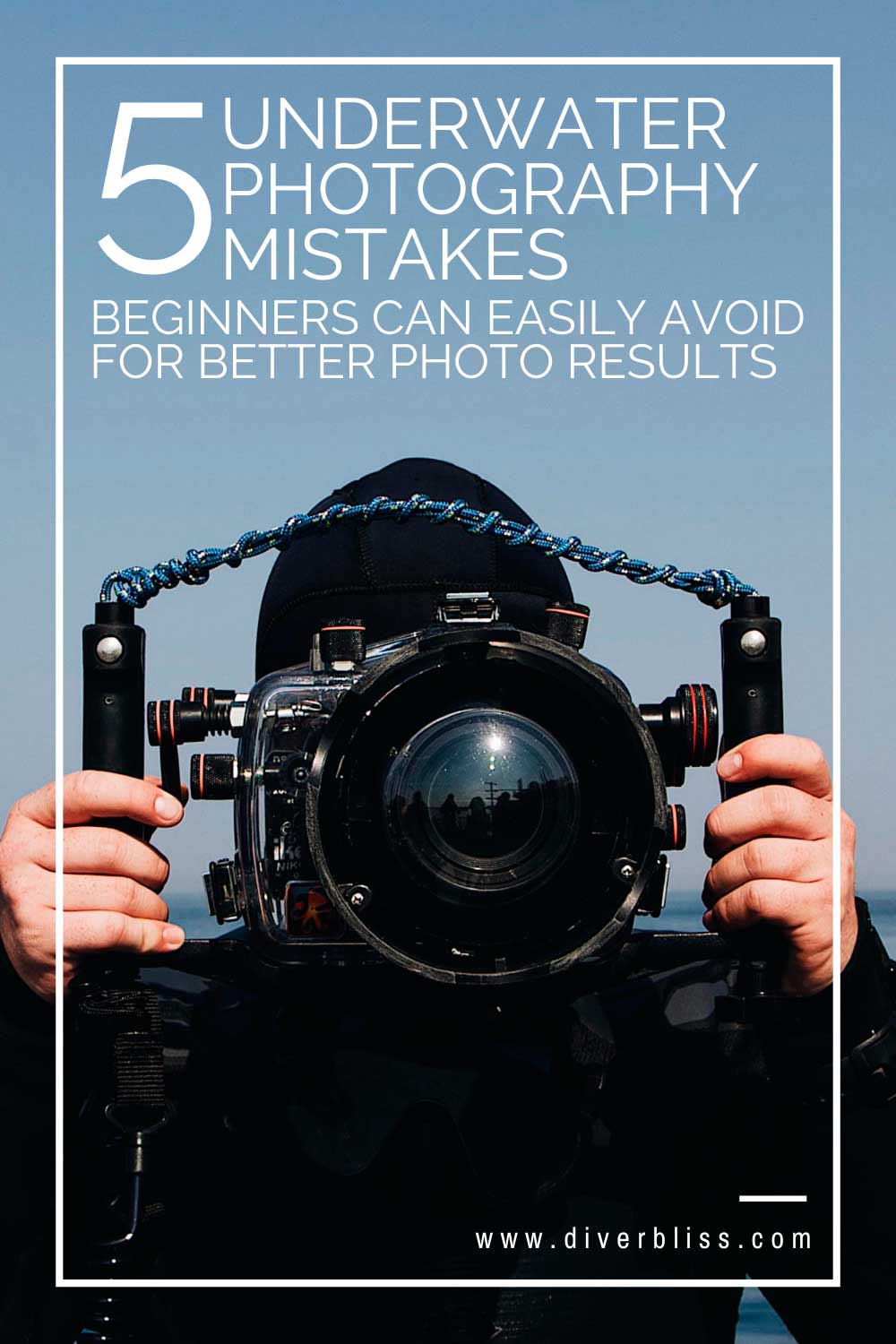
I may not be an expert in photography but I have learned a lot since I have started diving with my camera. Most often my worst photos were the result of my unpreparedness and being complacent as an underwater photographer.
While there are many things you cannot control while doing underwater photography, there are a lot of other things you can take into your own hands that will help you take better photos.
I hope you will learn from the underwater photography mistakes I have made and become a better photographer because of it.
Want to learn more about underwater photography? Read this article on 85 Best Tips on Underwater Photographers for Beginners. You can also read this post on 15 Amazing Women Underwater Photographers You Should Follow on Instagram for more photography tips and inspiration.
What underwater photography mistakes are you guilty off doing? Leave comment below!
